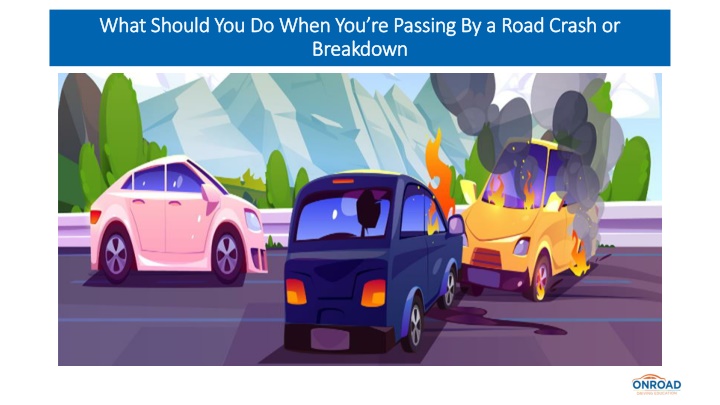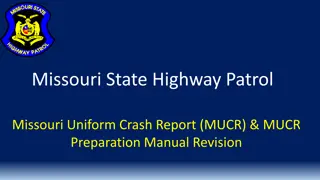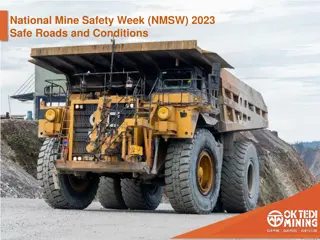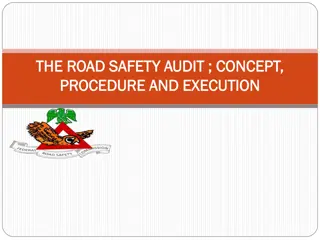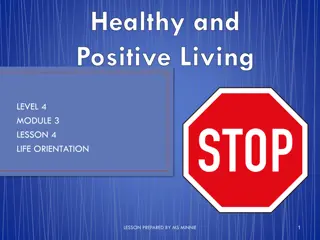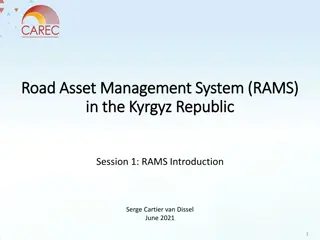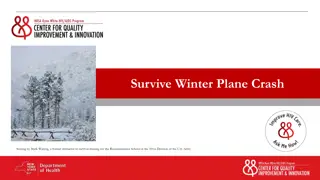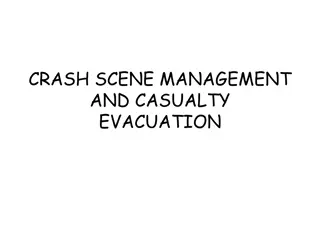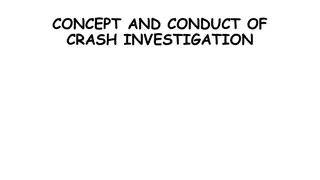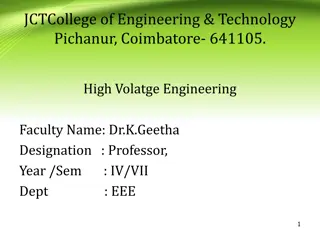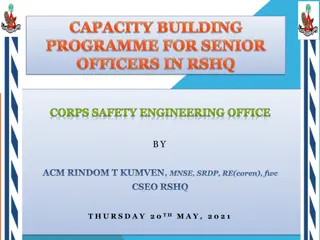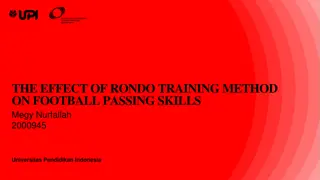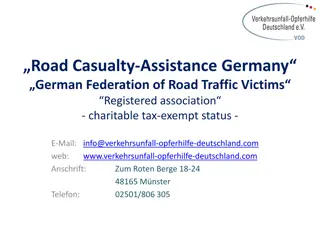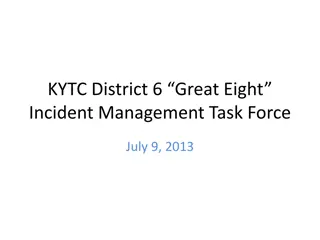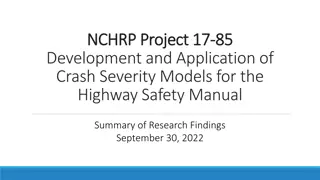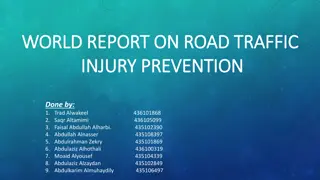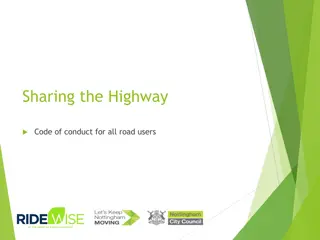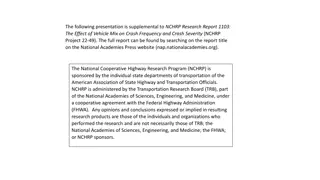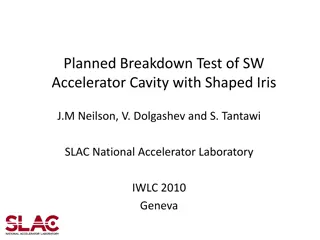What Should You Do When You’re Passing By a Road Crash or Breakdown
Whether youu2019ve taken a Safer Drivers Course or are still gaining experience with a driving school, knowing how to react when passing by a road crash or breakdown is essential.
Download Presentation

Please find below an Image/Link to download the presentation.
The content on the website is provided AS IS for your information and personal use only. It may not be sold, licensed, or shared on other websites without obtaining consent from the author.If you encounter any issues during the download, it is possible that the publisher has removed the file from their server.
You are allowed to download the files provided on this website for personal or commercial use, subject to the condition that they are used lawfully. All files are the property of their respective owners.
The content on the website is provided AS IS for your information and personal use only. It may not be sold, licensed, or shared on other websites without obtaining consent from the author.
E N D
Presentation Transcript
What Should You Do When Youre Passing By a Road Crash or What Should You Do When You re Passing By a Road Crash or Breakdown Breakdown
What Should You Do When Youre Passing By a Road Crash or What Should You Do When You re Passing By a Road Crash or Breakdown Breakdown Accidents are an unfortunate reality of driving. No matter how many Safer Drivers Courses you complete, how carefully you drive, there s always a chance of a road crash or a breakdown. And even if you re not directly involved in it, you ll most likely pass by one sooner or later. As a driver, your responsibility is not just driving safely and avoiding crashes. You re also responsible for safely handling tough situations like a crash or a breakdown if you happen to see it or drive past it. If you ve attended a driving school or taken driving lessons from a professional instructor, you might have some idea of what to do when you pass by a road crash or a breakdown. However, for those unaware, here s what you should do when you see a crash or a breakdown on the road. 1. Prioritize Safety Above All Else Road safety and personal safety are the biggest concerns while driving. So, if you do notice a crash or see a vehicle stranded ahead, you must slow down but stay alert to ensure everyone s safety. If you brake suddenly, it can disrupt other people behind you and lead to more accidents. Instead, you should reduce your speed gradually, check your surroundings, and stop the car in a safe spot. Also, leave enough space for other vehicles and pedestrians to pass by unhindered and be prepared for sudden movements. 2. Decide Whether to Stop While the first instinct when noticing a road crash or vehicle breakdown is to stop and help, you must determine whether your help is needed. The people involved may have already called for emergency help or have others helping them. Even if you re the first to reach them, make sure it is safe to stop and pull over in a place that doesn t disrupt traffic. However, if it s unsafe to stop and help, you must keep driving and report the incident to authorities. This helps avoid disrupting traffic, causing congestion, and increasing the risk of more accidents.
What Should You Do When Youre Passing By a Road Crash or What Should You Do When You re Passing By a Road Crash or Breakdown Breakdown 3. Contact Emergency Services The best thing to do when facing such situations is to ask for assistance from those who do know what to do! So, you should first call emergency services and give them the necessary details like the location of the incident, the number of vehicles involved, and injuries if any. Emergency personnel are trained to handle such situations and can do the job better than you fumbling about unknowingly. 4. Avoid Creating Additional Hazards Distractions are dangerous while driving. That s why most instructors stress the importance of staying focused and following road rules in their driving lessons. In road crashes and breakdowns, the risk of more accidents is high precisely because other uninvolved drivers and pedestrians get distracted by the collision or breakdown and disrupt the traffic. They slow down their speed and stare at the accident site to find out what happened or take photos of the incident. This can lead to traffic congestion and increase the risk of other vehicles crashing into each other. Instead of increasing the problems on the road, you should help only if it s needed or else continue driving. 5. Offer Assistance If Appropriate You can offer your assistance if necessary or appropriate. In most cases, emergency personnel offer the required first aid and assistance to the victims. However, if you re trained in first aid, you can help if it s safe. You can also help check if the victims are conscious or have any visible injuries, and reassure them of their safety. However, moving injured people can worsen their injuries, so you should wait for professionals to do it unless there s an immediate need to move them.
What Should You Do When Youre Passing By a Road Crash or What Should You Do When You re Passing By a Road Crash or Breakdown Breakdown 6. Be Mindful of Breakdown Protocols Common breakdown protocols involve maintaining a safe distance from the breakdown, avoiding slowing down, and offering assistance only when necessary. If you do notice a breakdown, you must slow down but not too much, maintain proper speed so that you don t disrupt the traffic. Some Australian roads and highways also have breakdown lanes. So, if you notice a breakdown, ensure to pull over in these lanes and ensure the stranded vehicle is in these lanes only. And if the situation is serious, consider calling roadside assistance instead of putting yourself at risk. 7. Know When to Keep Moving Help, when it s not needed, can sometimes become a hindrance. If you see a breakdown or a collision, and emergency services are already handling the situation, the best thing you can do is keep traffic flowing. Driving School instructors often teach learner drivers to remain calm and proceed cautiously in such cases. Lingering or slowing down unnecessarily will increase congestion and the chances of another accident. Conclusion Whether you ve taken a Safer Drivers Course or are still gaining experience with a driving school, knowing how to react when passing by a road crash or breakdown is essential. Help if you can and if it s needed. However, if you can t help, the best thing to do is stay safe, keep a level head, and avoid creating more problems by interfering where unnecessary. As a safe and responsible driver, following the above tips can help you contribute to creating a safer driving environment for everyone on the road.
Contact Us Contact Us Phone : +61 1300 667 623 Email : info@onroad.com.au Website : https://onroad.com.au/ Address : 20 Lexington Drive, Bella Vista, Sydney, NSW, Australia, New South Wales
